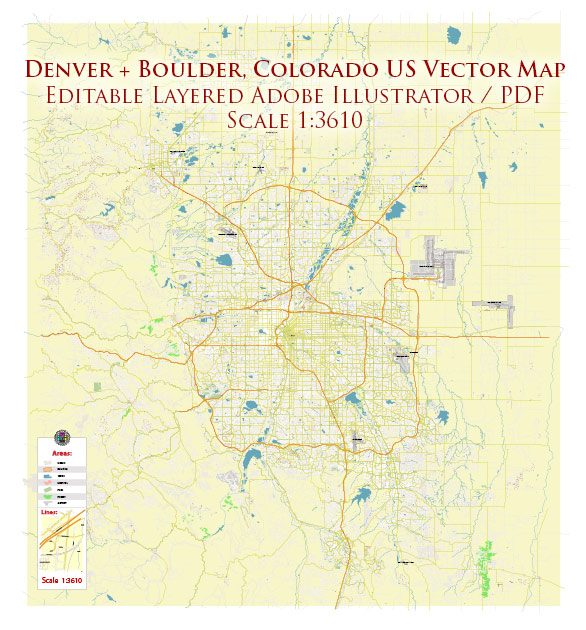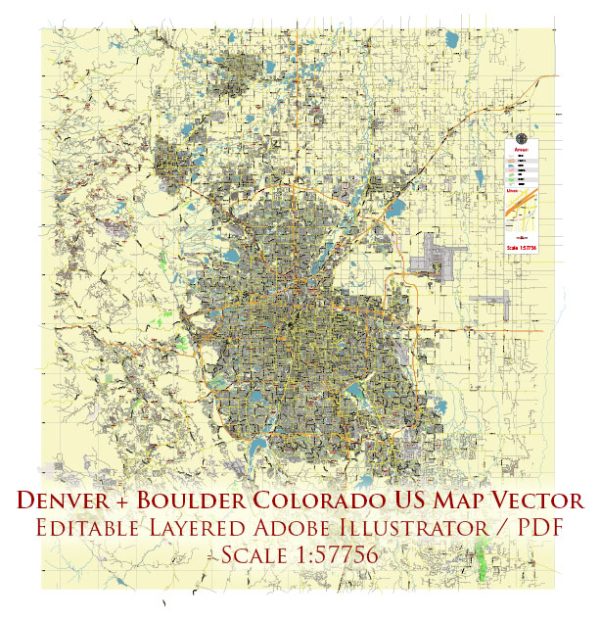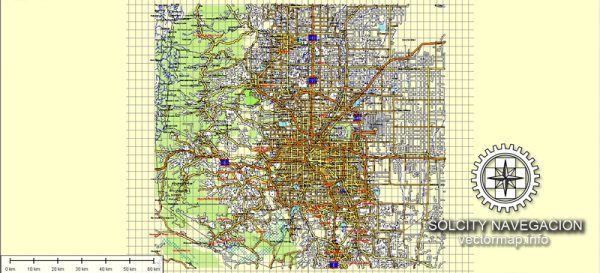A general overview of the economic and transport connections between Denver and Boulder, Colorado.
Vectormap.Net provide you with the most accurate and up-to-date vector maps in Adobe Illustrator, PDF and other formats, designed for editing and printing. Please read the vector map descriptions carefully.
Economic Connections:
- Industry and Employment:
- Denver is the capital and largest city of Colorado, with a diverse economy that includes finance, technology, manufacturing, and tourism.
- Boulder, situated northwest of Denver, is known for its focus on technology, research, and outdoor recreation. The city has a strong presence in industries such as aerospace, bioscience, and information technology.
- Technology and Innovation:
- Both Denver and Boulder have thriving technology sectors. Boulder is often referred to as the “Silicon Flatirons” due to its concentration of technology companies, startups, and research institutions.
- Denver, being a larger metropolitan area, also attracts tech companies and entrepreneurs.
- Collaborative Initiatives:
- The proximity of Denver and Boulder has led to collaborative initiatives between the two cities, especially in the technology and research sectors.
- Organizations such as the Metro Denver Economic Development Corporation and the Boulder Economic Council work to foster economic growth and collaboration in the region.
- Education and Research:
- The University of Colorado Boulder is a major research institution contributing to the economic and technological development of the region.
- Denver is home to several universities and research centers, adding to the overall knowledge base of the area.
Transport Connections:
- Highways:
- The primary highway connecting Denver and Boulder is US-36, also known as the Denver-Boulder Turnpike. This highway provides a direct and efficient route between the two cities.
- Public Transportation:
- The Regional Transportation District (RTD) operates bus services connecting Denver and Boulder. The Flatiron Flyer, a bus rapid transit service, is a popular option for commuters.
- The B Line, part of the RTD’s commuter rail network, connects Union Station in Denver to Westminster, with plans for future expansion to Boulder.
- Cycling and Pedestrian Paths:
- Both Denver and Boulder are known for their commitment to cycling and pedestrian infrastructure. The US-36 Bikeway connects the two cities, offering a dedicated path for cyclists.
- Airport Access:
- Denver International Airport (DEN), one of the busiest airports in the U.S., serves as a major transportation hub for both cities. It provides air connectivity for residents and businesses in the Denver-Boulder metropolitan area.
- Rail Transport:
- While there is no direct rail connection between Denver and Boulder, there have been discussions and studies regarding the potential for future rail projects to enhance regional transportation.
Overall, the economic and transport connections between Denver and Boulder contribute to the interconnected and dynamic nature of the Denver-Boulder metropolitan area. It’s essential to check for the latest developments and infrastructure projects for the most up-to-date information.




 Author: Kirill Shrayber, Ph.D.
Author: Kirill Shrayber, Ph.D.